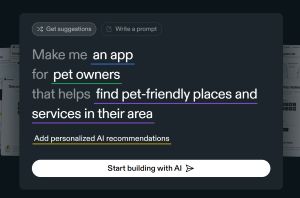Artificial Intelligence (AI) has transformed countless industries with its ability to mimic human intelligence. From language understanding to image recognition, various AI systems serve unique purposes. Let’s explore some of the most prominent types of AI systems and what they do.

Exploring Different AI Systems and Their Functions
Artificial Intelligence (AI) has transformed countless industries with its ability to mimic human intelligence. From language understanding to image recognition, various AI systems serve unique purposes. Let’s explore some of the most prominent types of AI systems and what they do, along with real-world examples.
1. Narrow AI (Weak AI)
Narrow AI systems are designed to perform specific tasks. They excel in their limited domain but lack the general intelligence to handle tasks outside their programming.
- Examples:
- Siri and Alexa: Virtual assistants that answer questions, set reminders, and control smart home devices.
- Netflix and Amazon recommendation algorithms: Suggest movies, shows, or products based on user preferences.
- Autonomous Vehicles (like Tesla): Use AI to navigate and make driving decisions within a defined environment.
- What they do: They process data to perform tasks such as speech recognition, image classification, or game playing effectively.
Top Platforms:
Apple Siri
Amazon Alexa
Google Assistant
Netflix Recommendation System
Tesla Autopilot
2. General AI (Strong AI)
General AI refers to systems with human-like intelligence, capable of understanding, learning, and applying knowledge across a wide range of tasks.
- Current status: Still hypothetical and under ongoing research.
- What it aims to do: Achieve human-level cognition, reasoning, and problem-solving abilities comparable to a human.
Top Platforms:
Currently, no commercial platforms exist for true General AI; it remains a research goal at institutions like OpenAI and DeepMind.
3. Machine Learning (ML)
A subset of AI, machine learning involves training algorithms to identify patterns in data and make predictions or decisions.
Examples:
- Email spam filters: Automatically detect and move spam emails to a separate folder.
- Credit scoring systems: Assess creditworthiness based on user data.
- Fraud detection: Identify suspicious transactions in banking.
- What it does: Learns from historical data to improve performance over time without being explicitly programmed for each task.
Top Platforms:
Google Cloud AI and Machine Learning
Amazon SageMaker
Microsoft Azure Machine Learning
IBM Watson Machine Learning
TensorFlow (by Google)
4. Deep Learning
A specialized form of machine learning that uses neural networks with many layers (deep neural networks).
- Examples:
- Voice assistants like Google Assistant: Transcribe and understand speech to carry out commands.
- Image recognition in social media: Automatically tag friends in uploaded photos.
- Language translation systems: Google Translate, which offers real-time translation of text and speech.
- What it does: Handles complex data such as images, audio, and natural language with high accuracy.
Top Platforms:
TensorFlow (Google)
PyTorch (Facebook)
Keras
Microsoft Cognitive Toolkit (CNTK)
DeepMind WaveNet
5. Natural Language Processing (NLP)
NLP enables machines to understand, interpret, and generate human language.
- Examples:
- Chatbots for customer service: Handle inquiries without human intervention.
- Language translation apps: Translate speech or text instantly.
- Sentiment analysis tools: Gauge public opinion on social media or product reviews.
- What it does: Facilitates interaction between humans and machines through text or speech.
Top Platforms:
Google Cloud Natural Language API
IBM Watson Natural Language Understanding
Microsoft Azure Text Analytics
OpenAI GPT models
Hugging Face Transformers
Subset of niche platforms
AI-powered platform for building professional web apps and websites.

AI calendar app for individuals, teams and companies.
6. Computer Vision
This AI system interprets visual information from the world.
- Examples:
- Facial recognition systems: Used in security and unlocking smartphones.
- Medical image analysis: Detect tumors or abnormalities in X-rays and MRIs.
- Autonomous vehicle navigation: Recognize obstacles, pedestrians, and traffic signs.
- What it does: Analyzes images and videos to identify objects, movements, or anomalies.
Top Platforms:
OpenCV
Google Cloud Vision AI
Amazon Rekognition
Microsoft Azure Computer Vision
Clarifai
Conclusion
AI systems are diverse and tailored for specific tasks, from understanding human language to recognizing images. As AI technology advances, these systems will become even more integrated into our daily lives, making tasks easier, faster, and more efficient.